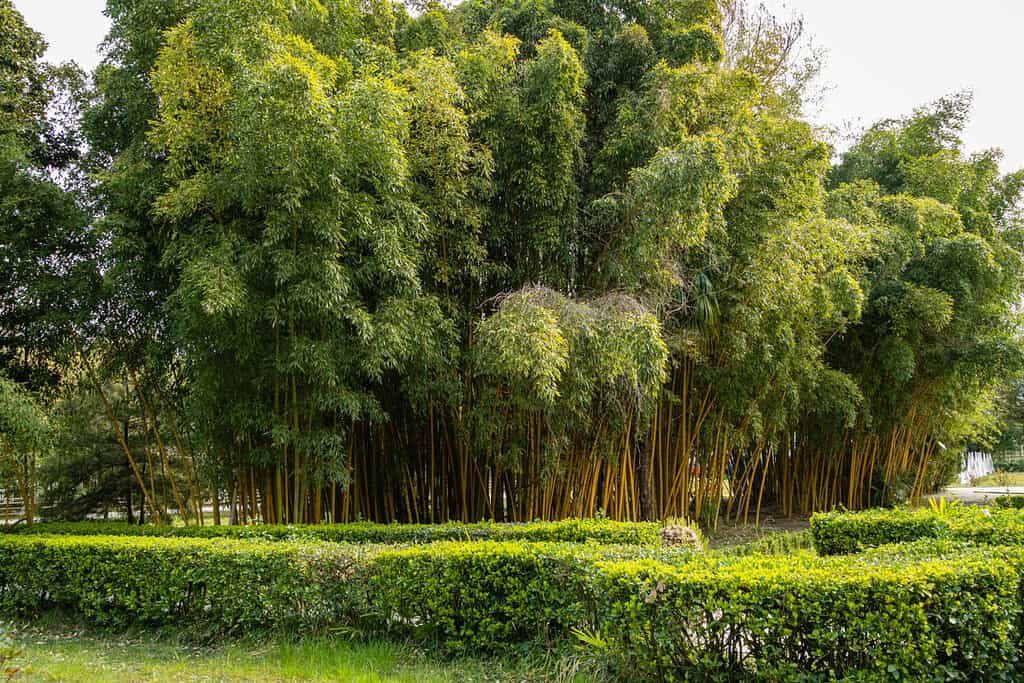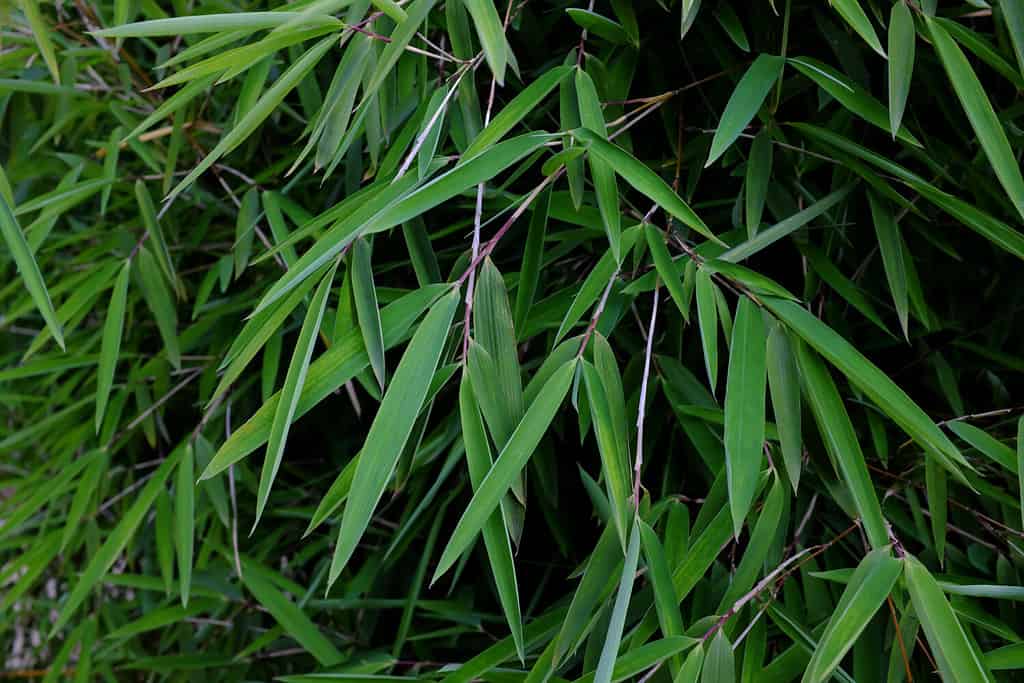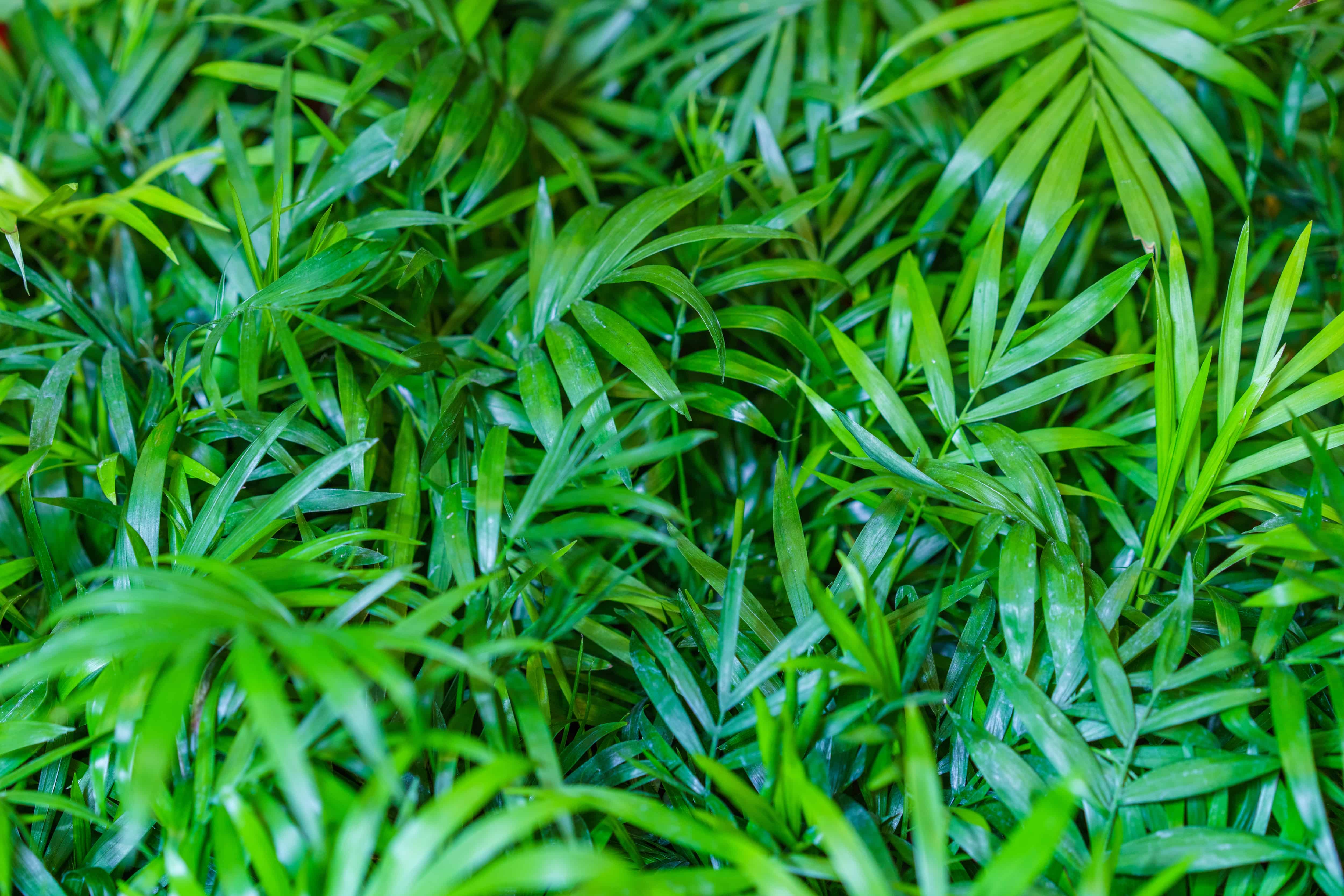Bamboo is a versatile plant that can be grown in many climates and soils, including the arid state of New Mexico. Bamboo is well-known for its sustainability and has been used for centuries. It makes an excellent material for construction, furniture, and design. Additionally, bamboo plays a prominent role in multiple countries’ culinary and medicinal traditions. It is part of the Poaceae (grass) family. And there are roughly 1,400 species! In this article, we will explore some of the different bamboo species that can grow in New Mexico, how to grow bamboo, and how to care for it.
Bamboo Species in New Mexico
Many bamboo species are well-suited for the climate and soil conditions in New Mexico. However, we cannot cover all of them here. So we will highlight a few species you can quickly and easily add to your property or landscape if you like. These species include yellow groove bamboo (Phyllostachys aureosulcata), golden bamboo (Phyllostachys aurea), blue fountain bamboo (Fargesia nitida), and temple bamboo (Semiarundinaria fastuosa).
Yellow groove bamboo is a fast-growing species that can reach up to 25 feet in height. It is exceptionally cold hardy, so it will survive in higher New Mexican areas. Its distinctive yellow grooves on the culms (stems) are eye-catching. Yellow groove is reliable, can thrive in most climates, and makes a terrific privacy fence.
Golden bamboo, also known as fishpole bamboo, is considered invasive in some areas. It spreads rapidly through its rhizomes. But that growth can get prevented and contained by installing rhizome breaks. When planted, golden bamboo can reach up to 30 feet high, though 20 feet is a typical maximum height.
Fargesia nitida, or blue fountain bamboo, will grow in New Mexico but is better suited for higher elevations. That is because this particular species does not withstand high heat terribly well. It is a clumping species that can reach up to 15 feet high. This bamboo species would work well as a windbreak or privacy screen.
Temple bamboo is a running species that grows up to 35 feet high. It does well in either shade or sun, so you have a little extra leeway in planting areas. The dark green culms have white stripes. And this bamboo species is very cold-tolerant. It also has lovely dark green leaves that help add to its ability to create an effective privacy screen.

makes a fantastic privacy screen.
©Alexander Denisenko/Shutterstock.com
How to Grow Bamboo
Growing bamboo is relatively easy. But taking the right steps from the start may help you avoid problems down the line. Here are some factors you will want to consider before transplanting your bamboo.
1. Choosing a Spot
If you have settled on a bamboo species you want, you will need to find an appropriate spot for the plant(s). Even the shorter bamboo can get quite tall. So make sure to select a location that can handle taller bamboo growth or a large stand. Then you will want to consider sun exposure to narrow down the ideal spot. Most bamboo species prefer direct sunlight. However, some will grow well in areas that receive partial shade. So understanding what your particular bamboo species likes is critical.
2. Preparing the Soil
Bamboo prefers nutrient-rich soil. But that’s not always available in New Mexico. If you have questions about the quality of your soil, send a sample to your local extension office for testing. Once they have the results, you will know which steps you need to take. However, while waiting on the test results, you can start by removing any weeds in the area. After receiving the test results, you can start adding any recommended amendments.
3. Planting the Bamboo
Bamboo can successfully get planted in the spring or fall. To plant bamboo, dig a hole about the size of the container. After planting your bamboo, put all the soil back in and pat down the area. You want to remove air pockets from the disturbed soil. Make sure to give your newly planted bamboo a thorough watering.
4. Watering and Fertilization
Bamboo needs water. And a lot of it. Make sure to give your bamboo plant(s) a deep weekly watering. Try to saturate the soil for 8 to 12 inches down. Keep your bamboo thoroughly watered. Additionally, bamboo will benefit from fertilization since it prefers nutritious soil. Try to source a bamboo-specific fertilizer if possible. If not, a well-balanced option will work well.

is considered invasive in some areas.
©iStock.com/Wirestock
How to Properly Care for Bamboo
In general, bamboo plants are relatively low-maintenance. So if you were looking for an easy plant, you have come to the right place. However, they do still need proper care to thrive. Here are a few tips to help you ensure your bamboo has a long, healthy life.
1. Watering
This step gets mentioned again because it’s that important. Many plants do just fine if their soil briefly dries out. But not bamboo. Bamboo plants require (and love) moist soil. So, water away. However, it is important to note that after about a year, bamboo plants will do ok under occasional drought conditions. So feel free to take that vacation without worrying about missing a watering.
2. Mulching
Mulching can help conserve moisture in the soil and prevent weeds from growing around the bamboo. A layer of mulch, such as wood chips or shredded leaves, should be applied around the base of the bamboo. Make sure you don’t cover the bamboo culms or leaves.
3. Pruning
This step isn’t technically necessary but can be helpful. Removing any dead or damaged leaves or culms will help ensure overall healthier growth. You can also use pruning to help control the spread of bamboo or keep its height in check. Pruning should be done in the early spring before new growth appears. It is important to use sharp pruning shears to avoid damaging the plant. And if you are fully thining the stand, cut the culms as close to the ground as possible.
4. Controlling Spread
Some bamboo species, like running bamboo, can spread rapidly and become invasive if not controlled. But there are several steps you can take to prevent the bamboo from spreading. Plant your bamboo in a contained area (or even a container if it is a shorter plant). Alternatively, you can install a rhizome barrier directly into the ground. That will help keep its roots from extending where you don’t want them.
5. Pest and Disease Control
Bamboo does not get bombarded with pests or diseases. However, there are a few pesky issues that can arise from time to time. So you should monitor your bamboo for signs of damage or pests. Some small critters to watch for include bamboo mites, bamboo mealybugs, and bamboo aphids. If your bamboo shows signs of pests, they can get controlled with insecticidal soap or neem oil. Some common diseases affecting bamboo include bamboo mosaic virus, bamboo wilt, and root rot. It is possible to prevent these diseases by planting healthy bamboo in well-draining soil and avoiding overwatering.

has long, thin, dark green leaves.
©cristo95/Shutterstock.com
Final Thoughts
Ultimately, planting bamboo is a rewarding experience. You get to care for a beautiful plant, which is also taking care of you with its privacy screen. And the best part is that if you select the right species, you can even add young shoots to your meals. The tasty treat should get eaten early before it starts to harden. So there is no downside to adding bamboo to your garden or landscape. You get a beautiful, low-maintenance plant that will make a lovely addition to any outdoor space. So, pop by your local nursery to pick one up.
Thank you for reading! Have some feedback for us? Contact the AZ Animals editorial team.








